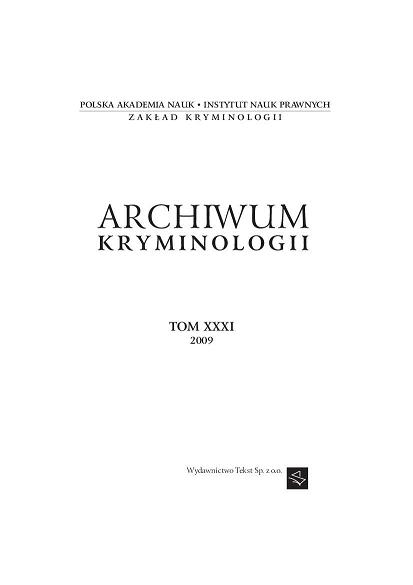Czynny żal jako instrument polityki kryminalnej i karnej
Active repentance as an instrument of criminal and penal policy
Author(s): Olga SitarzSubject(s): Law, Constitution, Jurisprudence
Published by: Instytut Nauk Prawnych PAN
Keywords: CRIMINAL LAW; ACTIVE REPENTANCE;
Summary/Abstract: The object of the analysis are the institution known in the criminal law as active repentance and other similar normative institutions, which are sometimes referred to by scientists as active repentance in its broad sense or as quasi-active repentance. I was interested in the behavior of the perpetrator after commitment of an offence as a factor affecting the extent of perpetrator’s criminal liability in the context of criminal and penal policy (legally permissible modification of criminal responsibility in individual cases). Even a brief review of the institutions of active repentance in the Polish criminal law (regulated in the general and specific chapters of the Penal Code) allows to state that there is no uniformity, consistency, and rationality in shaping of this substantial instrument of criminal and penal policy. Sometimes one may have an impression that the issue of active repentance was regulated quite accidentally, not as a part of the comprehensive, rational criminal policy pursued by the entire criminal justice system. Since the key question is whether the established and accepted objectives and functions of punishment and / or criminal law can be achieved without a punishment, therefore the first part of the article is devoted to theories and functions of the penalty in conjunction with the reasons and functions attributed to active repentance. The different functions of an active repentance – to increase the efficiency – require some specific element in the design of this institution to be taken into consideration. These variables may be: if the benefits gained by the repentant are facultative or mandatory, the extent of the benefits, additional requirements imposed on the offender related to his conduct, an indication of a shorter or longer time limit to meet the statutory requirements and / or conditions related to repentant’s motivation, directory of the deeds in which the perpetrator can use the benefits arising from his active repentance, and indirectly also the place and method of regulation. Whether these variables should include consent of the victim, with all its consequences, probably also needs to be taken into consideration. Referring to the presented features of active repentance, by operating with the indicated variables, one can attempt to construct a variety of models of active repentance appropriate for performance of specific functions. Assuming its preventive function, active repentance should be provided for the widest range of crimes possible. Preferably, active repentance should be described clearly and precisely in the general part of the Criminal Code. Benefits provided for the accused person should be as wide as possible and always obligatory. Effective preventive function enforces the need to spread this instrument, especially the profits associated with it.
Journal: Archiwum Kryminologii
- Issue Year: 2009
- Issue No: XXXI
- Page Range: 159-172
- Page Count: 14
- Language: Polish

